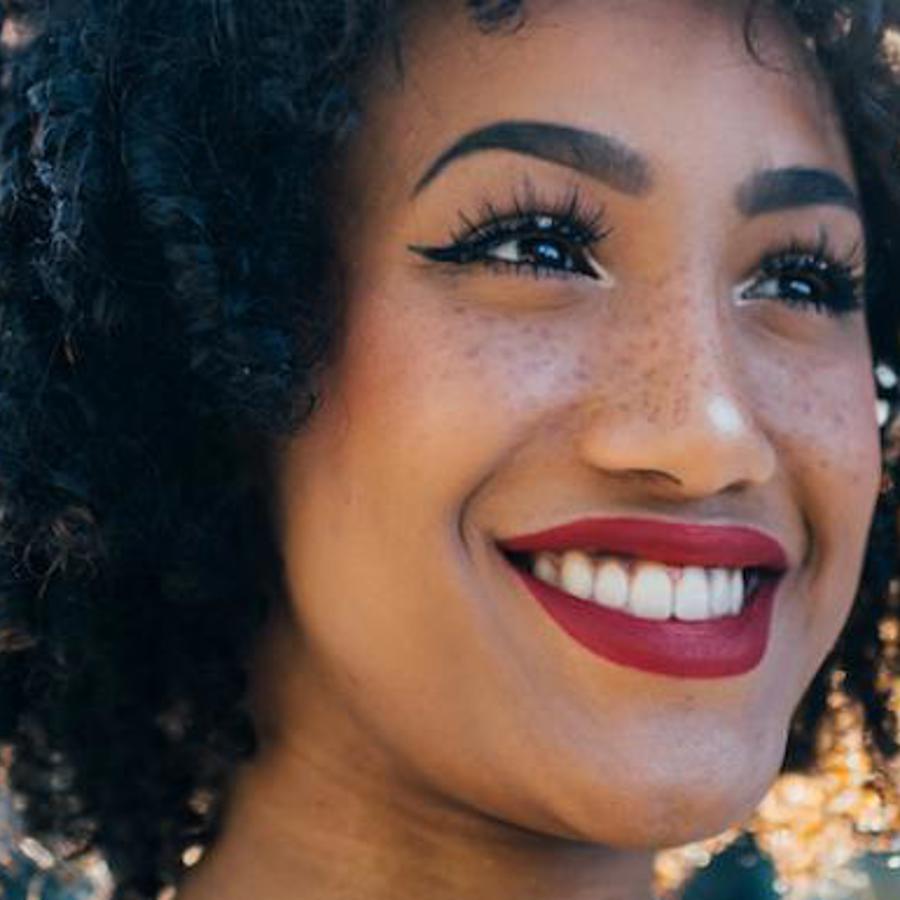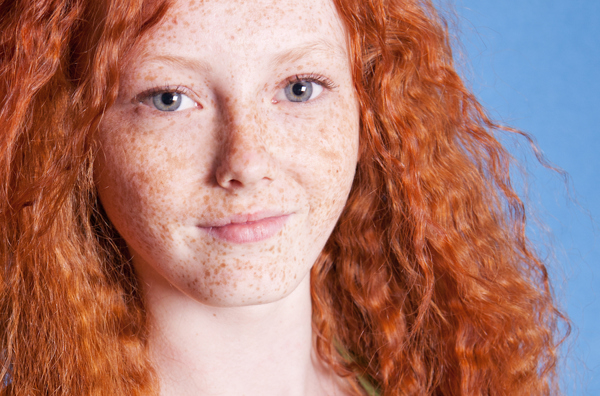
Why do I have freckles?
October 20, 2006

- Related Topics:
- Skin pigmentation,
- Pigmentation traits,
- Pleiotropy,
- Freckles
A middle school student from California asks:
"Why do I have freckles?"
Some say freckles come from the kiss of an angel. But we know where most of them really come from. They come from genes. And the sun.
Freckles are spots usually seen on people with fair or light skin. These spots contain melanin, a pigment protein.
Melanin gets made when harmful ultraviolet (UV) light from the sun hits our skin. This UV light is very powerful and can damage DNA. Melanin shades and protects our DNA from the sun.
Not every cell in our body makes pigment though. The cells in the skin that make melanin are called melanocytes.
In some people, these melanocytes are spread out pretty evenly in the skin. These folks tan.
Other people have their melanocytes in clumps. These people end up with clusters of cells that make pigment while the rest of the skin stays light (or turns red). These clumped cells are freckles.
Do we know why people with freckles have clumped melanocytes? We know some of, but not the whole story.
A big clue was the fact that people with red hair tend to also have freckles. And that freckled people often have red haired children. Why is this?
Because most cases of freckles and red hair are caused by the same gene -- MC1R. Here's how it works.
The MC1R gene is really just a set of instructions for making the MC1R protein. The MC1R protein sits on the outside of melanocytes where part of its job is to make sure that there is a certain balance of pigments in hair and skin.

There are two main pigments in people. The most common one is eumelanin. It is responsible for most hair colors other than red.
The other pigment, pheomelanin, is more rare. It is responsible for red hair and the orangish red look of many freckles.
When MC1R is working, it turns any pheomelanin that gets made into eumelanin. So when MCIR is broken, you get a build up of pheomelanin. And red hair. So people with broken MC1R genes have red hair.
But if MC1R is responsible for both red hair and freckles, why do some people only have freckles? It has to do with how many copies of certain versions of the MC1R gene they have.
Remember, everyone has 2 copies of most of their genes. And these genes come in different versions.
Some people have certain versions of MC1R that don't work well. If one of their copies doesn't work well, they can get freckles. If both don't work well, they get red hair and freckles.
Now the red hair makes sense. If MC1R doesn't work, you'll get a build up of pheomelanin and end up with red hair. But why does having half your MC1R work sometimes cause freckles?

Scientists don't know. What they know is that having one or two non-working copies of MC1R can sometimes cause freckles. Note the sometimes.
Not everyone who is a carrier for red hair has freckles. So there must be more to freckles than the MC1R gene itself. We haven't yet found what that other thing is.
Some recent work also shows that there are other ways to get freckles besides the MC1R gene. Recently a group of scientists in China found another freckle gene. This one was on chromosome 4 in a Chinese family with freckles.
So as you can see, we have part of the story on freckles but don't know everything yet. Having broken copies of the MC1R gene isn't always enough. And there are other ways to get freckles besides MC1R.
Most likely we are missing some other genes needed for freckling. Certain versions of these genes might need to be there along with certain versions of MC1R to end up with freckles. Scientists will keep looking.
MC1R is a very interesting gene. It leads to the confusing result that freckles are dominant and red hair is recessive. Even though they are the same gene!
The MC1R gene is actually responsible for hair color in many animals. Blond or ginger colored mice were found to have the same gene variations. Scientists have also recently found that woolly mammoths that were light colored also had the same MC1R changes.
Hair, skin, and particularly eye color can all get pretty complex. Most often, these traits aren't as simple as being dominant or recessive, like having red hair or freckles. Our genes interact in many different ways to finally make us who we are.

Author: Dr. Devasena Gnanashanmugam
When this answer was published in 2006, Devasena was a postdoctoral fellow in the Department of Pediatric Infectious Diseases, studying the oral polio vaccine in Yvonne Maldonado's laboratory. Devasena wrote this answer while participating in the Stanford at The Tech program.
 Skip Navigation
Skip Navigation
